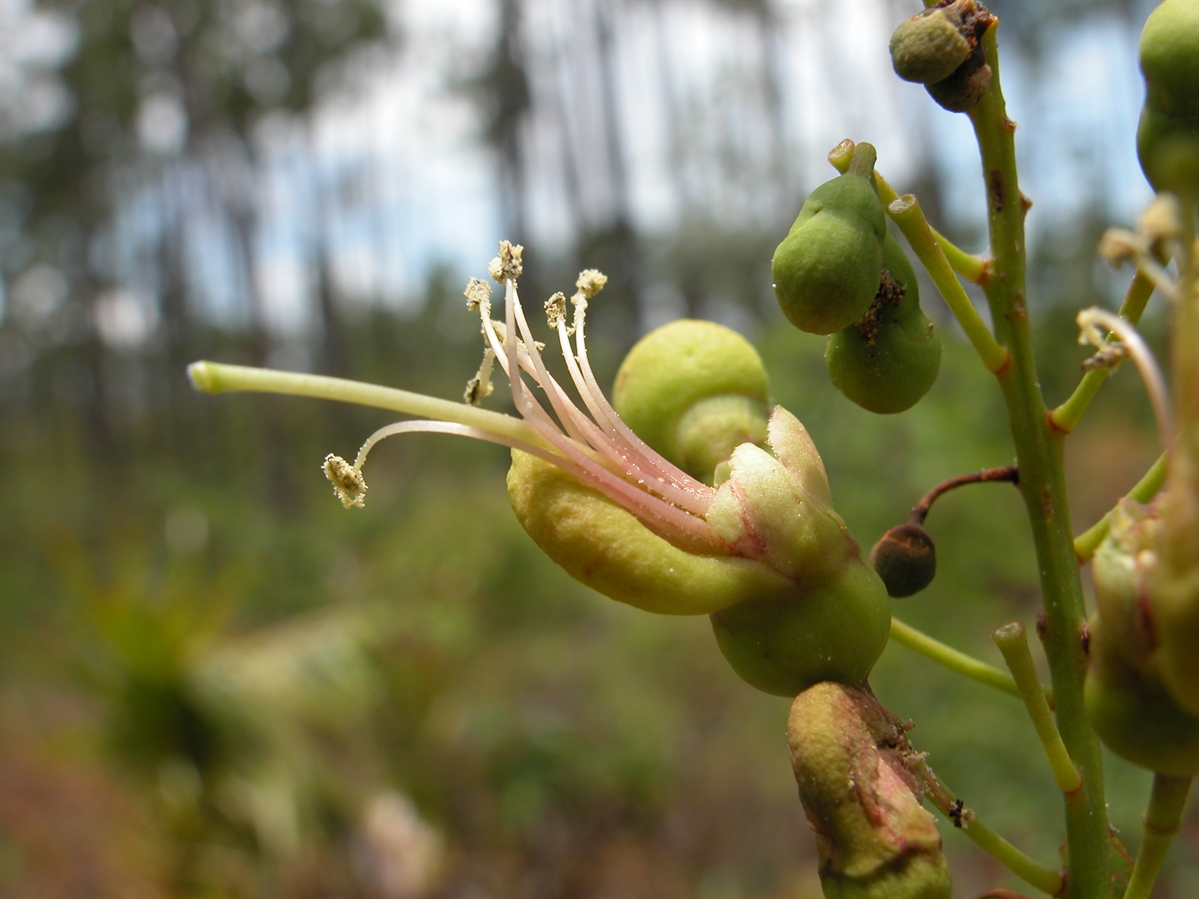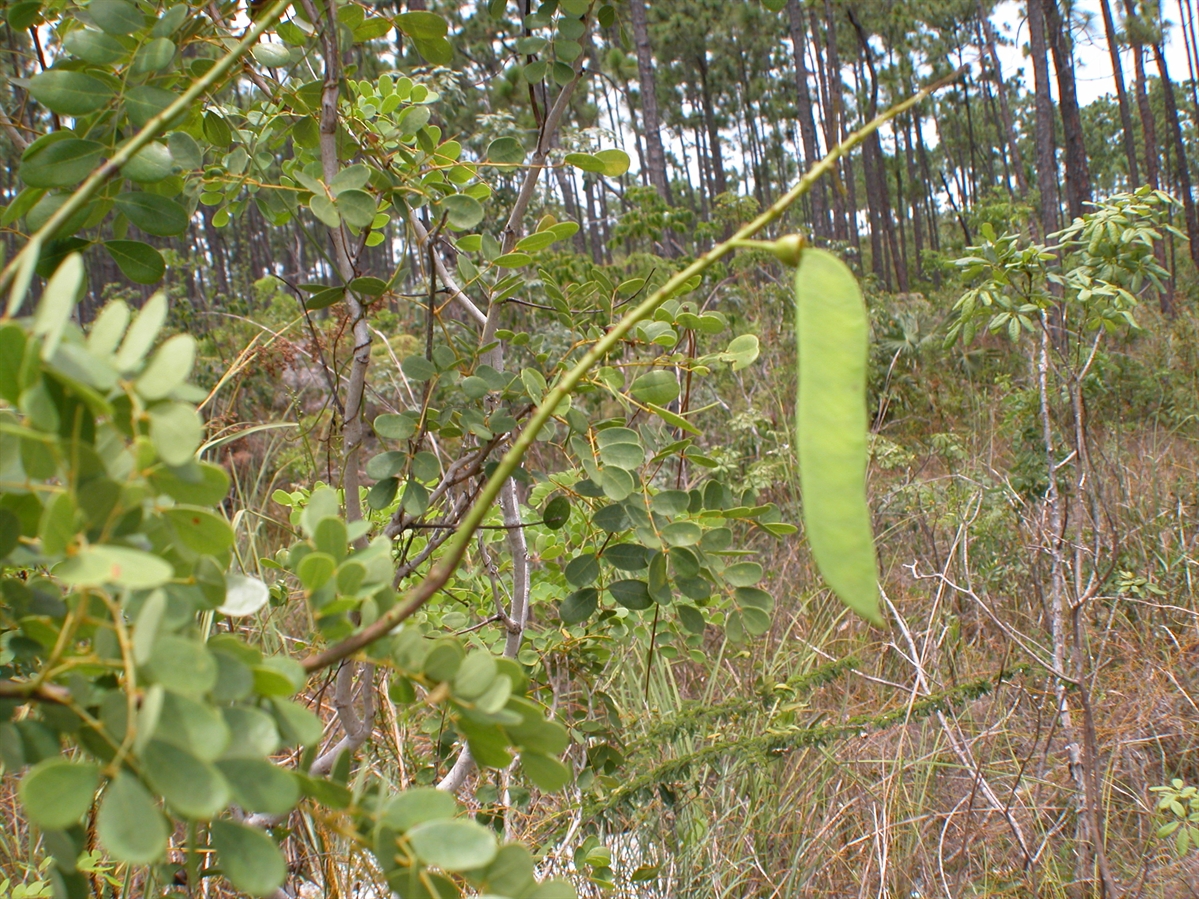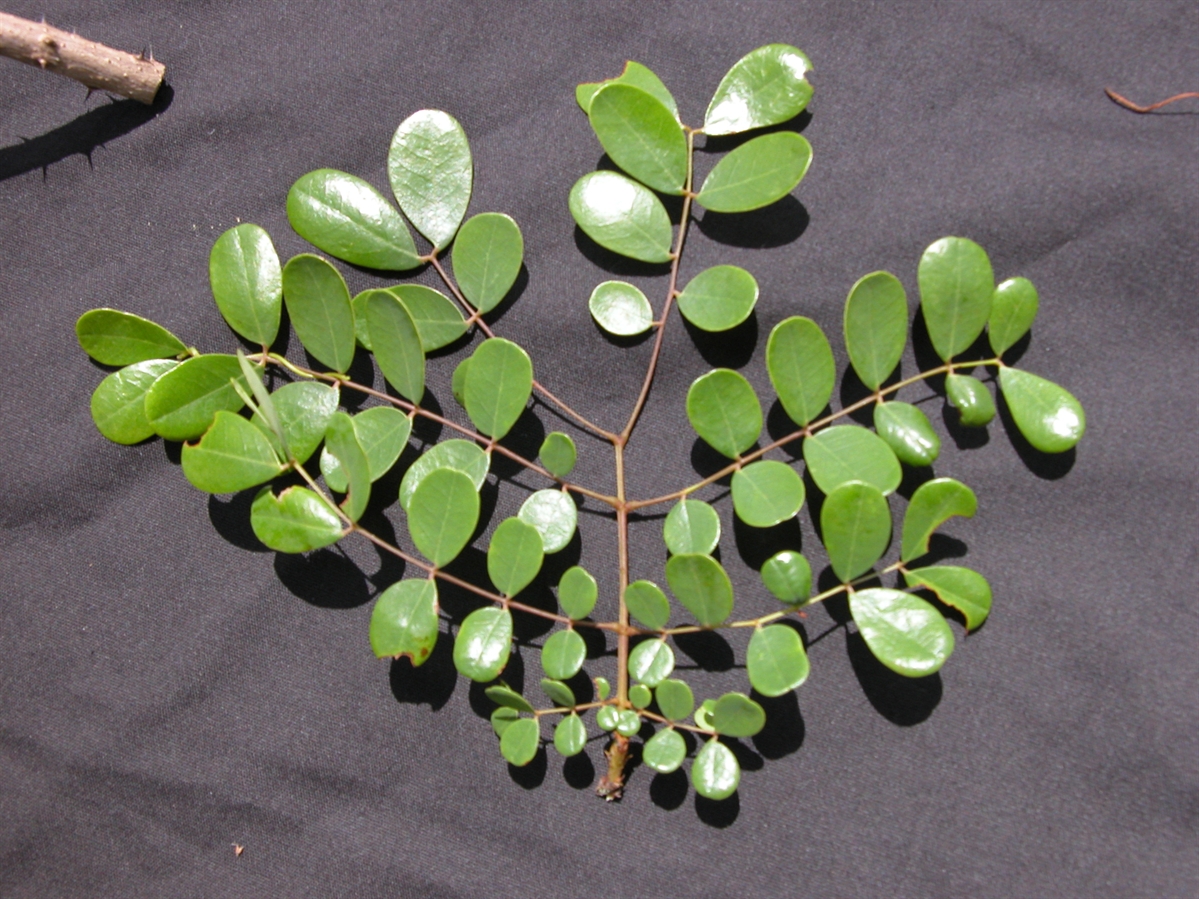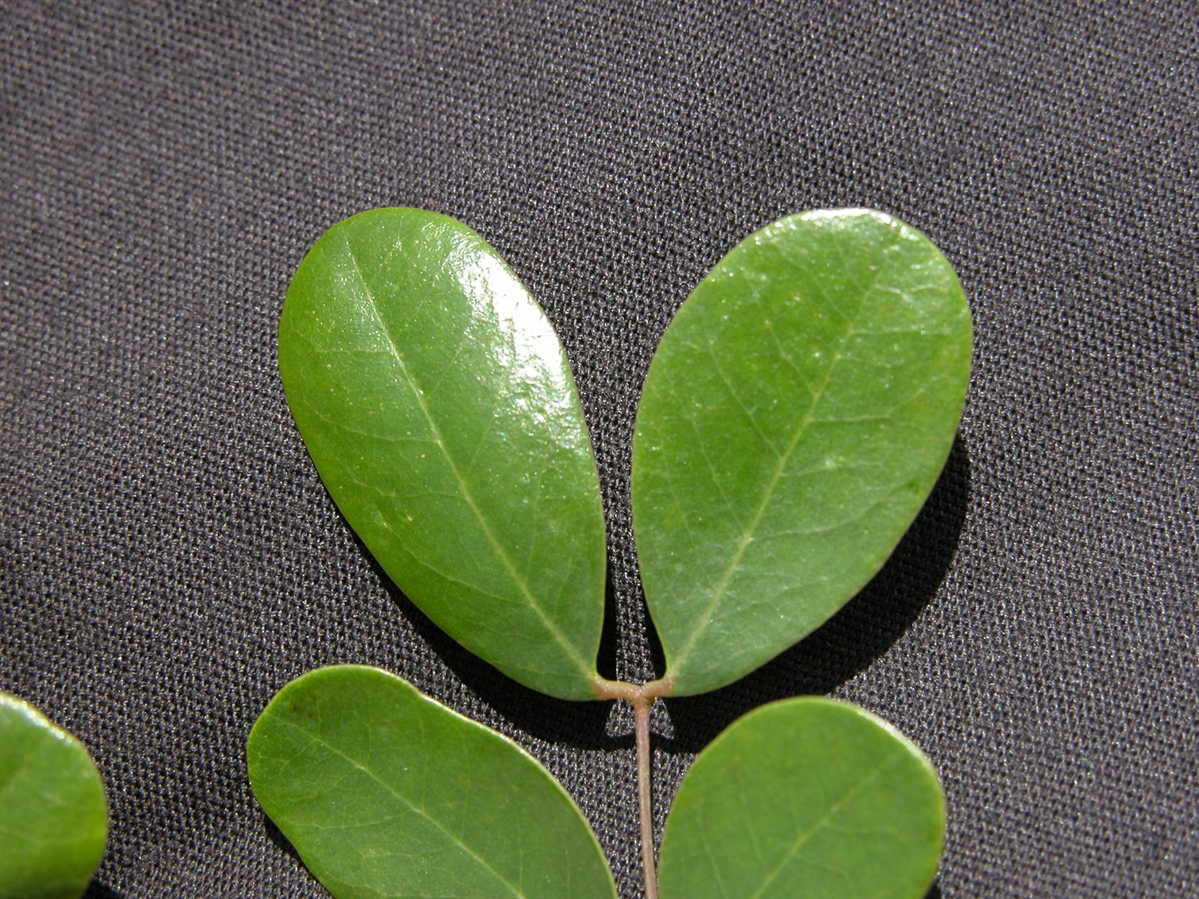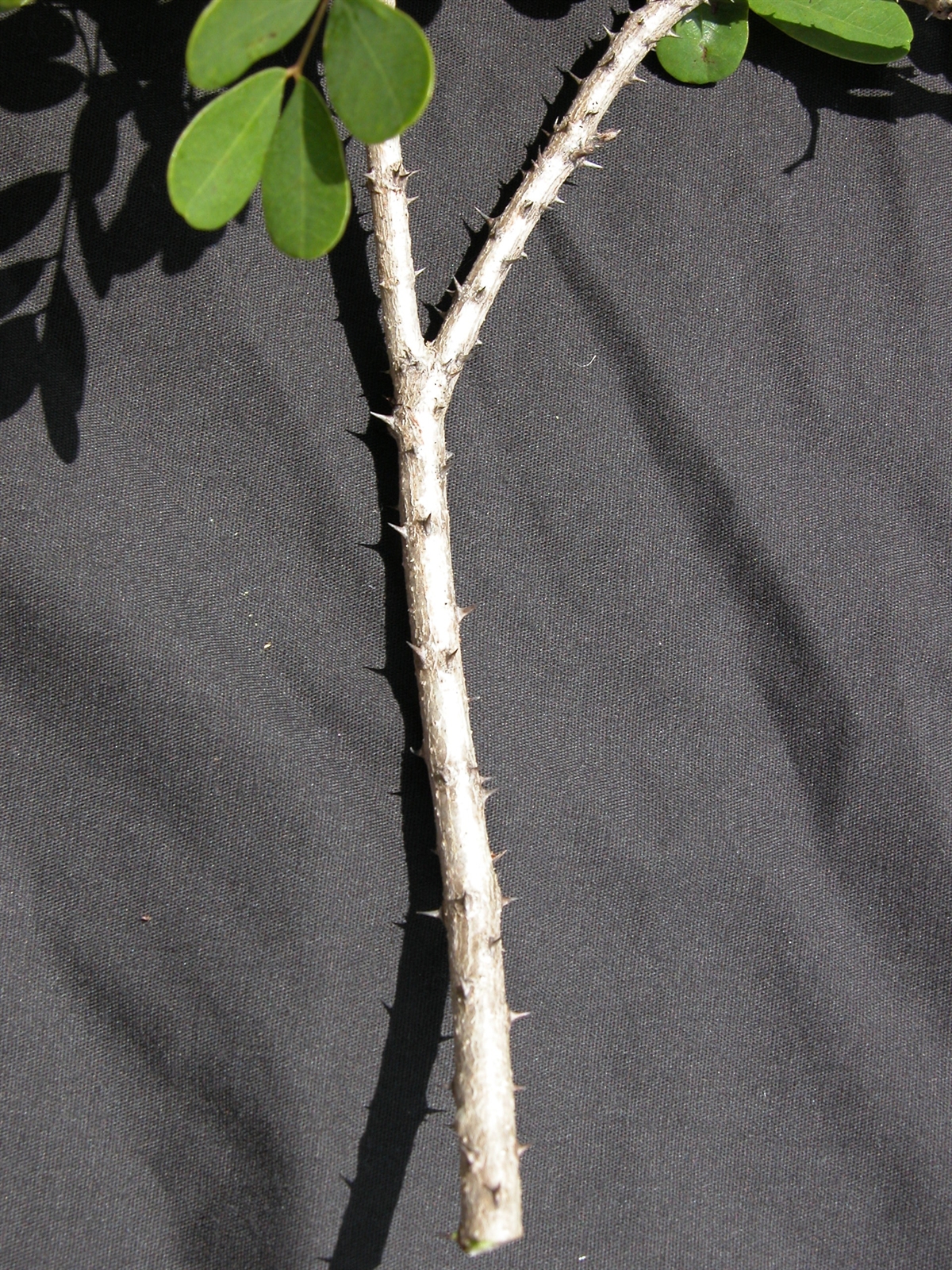Habit: Caesalpinia bahamensis grows as a large shrub to small tree up to 5 m in height. The trunk and stems are brownish-grey and are covered with prickles. The leaves are arranged alternately, are pinnately compound, to 30 cm in length with the pinnae in 2-4 pairs each with 3-6 leaflets. The leaflets are obovate with a rounded leaf apex and entire margin.
The complete, perfect, zygomorphic flowers are arranged in racemes that exceed the length of the leaves. The flowers are zygomorphic. There are 5 greenish-yellow sepals in the calyx and 5 greenish-yellow petals in the corolla that are fused at the base. There are 9-10 stamens that exceed the perianth. The fruit is a legume, 5-8 cm in length, turning brown at maturity.
Habitat: Caesalpinia bahamensis grows in Dry Broadleaf Evergreen Formations –Forest/Shrublands (coppice) as well as an understory shrub in Pine Woodlands.
Distribution: Caesalpinia bahamensis grows through out all islands in the Lucayan Archipelago more commonly in the northern islands as well as in Cuba.
Medicinal/Cultural/Economic usage: Caesalpinia bahamensis has no known medicinal uses in the Lucayan Archipelago. It is closely related to C. vesicaria that has a long cultural and economic history in the Bahamas.
